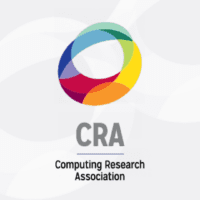Policy Spotlight: Dan Reed, National Science Board
By CRA Government Affairs
As part of CRA’s mission to help the computing research community become more aware and engaged in the policymaking that affects our field, Computing Research News’ new Q&A series, Policy Spotlight: Conversations with Computing Researchers, will highlight the work that community members are doing in governmental roles or who have taken part in CRA Government Affairs activities. This new series will allow you to hear directly from policy-minded members of the community, in their own words, to highlight work that the community should know about and raise awareness of the types of opportunities that are available to those interested in serving.
 A natural choice for the first person to feature in this new effort is Dan Reed, who has been a member of the National Science Board since 2018, served as the Chair since 2022, and whose term will be coming to a close at the end of 2024.
A natural choice for the first person to feature in this new effort is Dan Reed, who has been a member of the National Science Board since 2018, served as the Chair since 2022, and whose term will be coming to a close at the end of 2024.
Dr. Reed’s leadership of the NSB coincided with a momentous time period at NSF. Several major issues arose, such as concerns around research security with the nation’s research enterprise; the explosion of interest in Congress and the Federal Government with the promises and drawbacks with artificial intelligence; and the passage of the Chips & Science Act, of which Dan was a tireless advocate for passage. Outside the Beltway, Dr. Reed is the Presidential Professor of Computational Science and Professor of Computer Science and Electrical & Computer Engineering at the University of Utah, where he previously served as Provost. Dr. Reed also served as the Chair of the CRA Board of Directors from 2004 to 2008, and has been engaged with CRA in a number of other impactful ways over the years.
What do you do in your current position? How would you explain your current role to someone in the community?
The National Science Foundation Act of 1950 charged the National Science Board (NSB) with two roles: to be the governing board of the NSF and to serve as an advisor to Congress and the President on policy matters related to STEM research and STEM education. As Chair of the NSB, I work collaboratively with the NSF Director and the Board to shape NSF policies and priorities; engage with the Congress and the White House on research funding and policies, including workforce development and global competitiveness, research infrastructure; interact with the national science and engineering community; and lead the quarterly NSB meetings.
What has been your biggest accomplishment as chairman of the National Science Board?
The Board works as a team and in collaboration with NSF; I will highlight just a few recent accomplishments. These include the launch of the new Technology, Innovation, and Partnerships (TIP) Directorate, the first in over 30 years, and the announcement of the associated Regional Innovation Engines (RIEs); our work emphasizing the importance of expanding and diversifying the STEM workforce (the “Missing Millions”); the passage of the CHIPS and Science Act, which authorized higher funding levels for NSF; the ongoing work of the Merit Review Commission, which is examining the evaluation criteria for NSF awards, the first such review in over a decade; and the beginning of a process to prioritize investments in large-scale research infrastructure.
How can the computing community participate in your work?
First, the NSB welcomes input and ideas on all topics related to research, workforce, and infrastructure; reach out to me or individual members with questions, comments or concerns. NSB meetings (both the plenary meeting and many committee meetings) are public, and the agendas are published in advance on the NSB website. Second, engage with CISE leadership so it can communicate opportunities and issues to which the NSB might need to respond.
What issues that are before the NSB do you feel the computing community most needs to be aware of right now?
Because computing now underlies essentially all of science and engineering, the computing community really must be actively engaged. More concretely, there are important technical and policy issues surrounding AI and the NAIRR pilot, cybersecurity, privacy, and misinformation; CHIPS and Science Act investments; computational modeling and data analytics; computing talent development and support; and research funding.
What are you most looking forward to, either personally or professionally, for the remainder of 2024?
The biennial, Congressionally mandated, Science and Engineering Indicators report is being rolled out in March (see https://ncses.nsf.gov/indicators); it is the gold standard for the state of the US position in the global STEM enterprise. Beyond that, I am looking forward to the completion of the Merit Review Commission and its final report, expected in December; the coming re-competition of the Antarctic support contract; continued conversations about critical research infrastructure needs and prioritization; creating a broader and more inclusive STEM workforce; and expanding federal investment in research.
As Vannevar Bush noted in his seminal essay, The Endless Frontier, “.. without scientific progress no amount of achievement in other directions can insure our health, prosperity, and security as a nation in the modern world.”









